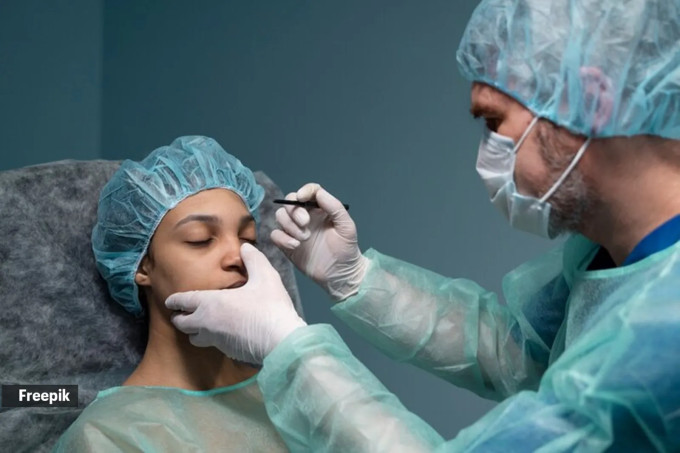Can hyaluronic acid fillers cause cancer?
Many young women today are turning to cosmetic fillers like hyaluronic acid to enhance their appearance. However, concerns are being raised about the safety of these fillers, including the alarming claim that they might cause cancer by affecting the body’s lymphatic system. According to content creator Kashif Khan, when opting for fillers, it is important to consider the bigger picture. “The manufacturers of hyaluronic acid will tell you they’ve tested it and there’s no problem, but people using it will tell you, ‘I don’t feel the same’.”
Hyaluronic acid, he states, is known to clog up the body’s lymph system leading to what we call stagnant lymph, meaning that this key detox function in your body just isn’t happening ’cause the lymphs aren’t moving. “This is the reason that toxic substrates then cause inflammation leading to eventually cancer,” he captions his reel on the subject.

View this post on Instagram
A post shared by Kashif Khan (@kashkhanofficial)
To get to the bottom of this, we spoke to Dr Gunasekar Vuppalapti, senior aesthetic and reconstructive plastic surgeon at GVG Invivo Hospital, about the potential risks and long-term effects of using these popular beauty treatments.
Is there any link between the use of hyaluronic acid fillers and the development of cancer?
Injectable hyaluronic acid (HA) has a long safety record with no known link to cancer, says Dr Vuppalapti, who has been practising for 18 years with no known cases of cancer caused by HA fillers. “For over 70 years, it’s been used successfully, with no reported cases of cancer among users. Until recently (pre-COVID-19), injectable hyaluronic acid came from reputable brands with FDA-approved manufacturing facilities,” he adds. Qualified professionals like plastic surgeons, dermatologists, maxillofacial surgeons, and oculoplastic surgeons administered the product. However, he says, the market is now flooded with injectable HA products from unknown sources, including counterfeits of reputable brands. “These are often injected by unqualified individuals, raising concerns about safety due to a lack of regulations.”
How does the lymphatic system work in relation to hyaluronic acid fillers?
Dr Vuppalapti elaborates, “The lymphatic system is an extensive network of fine channels distributed throughout the body, draining the lymph. Lymph, or lymphatic fluid, is an excess fluid that drains from cells and tissues and isn’t reabsorbed into the capillaries and venous system. Unlike the venous system, the lymphatic system carries tissue debris from damaged cells, bacteria, tumor cells, proteins, and other substances.”
 There is a risk of developing ‘stagnant lymph’ if the lymphatic system is obstructed (Source: Freepik)
There is a risk of developing ‘stagnant lymph’ if the lymphatic system is obstructed (Source: Freepik)
These bacteria and early tumour cells are presented to lymph nodes, which act as a sampling system that activates our immune system to produce antibodies against potential threats such as infections or tumours arising anywhere in the body. This process can result in enlarged lymph nodes, a clinical sign that doctors can detect and treat according to the clinical diagnosis. “Theoretically, there is a risk of developing ‘stagnant lymph’ if the lymphatic system is obstructed. However, in practice, there have been no reports of cancer developing among people who received USFDA-approved HA fillers administered by qualified doctors,” he says. These doctors are knowledgeable about safety limits in manufacturing, safe volumes, and safe anatomical locations.
Steps individuals can take to ensure the safety and effectiveness of cosmetic fillers
When considering filler injections, Dr Vuppalapti stresses, it is crucial to choose an experienced and qualified plastic surgeon, dermatologist, maxillofacial surgeon, or oculoplastic surgeon. “Never compromise on the quality of the product and ensure it is genuine. The sterility of the injection process is paramount to prevent infections. Additionally, avoid getting over-injected or being greedy with the volume of fillers, as excessive fillers in the wrong planes can cause potential ‘stagnant lymph’,” he adds.
Disclaimer: The copyright of this article belongs to the original author. Reposting this article is solely for the purpose of information dissemination and does not constitute any investment advice. If there is any infringement, please contact us immediately. We will make corrections or deletions as necessary. Thank you.

